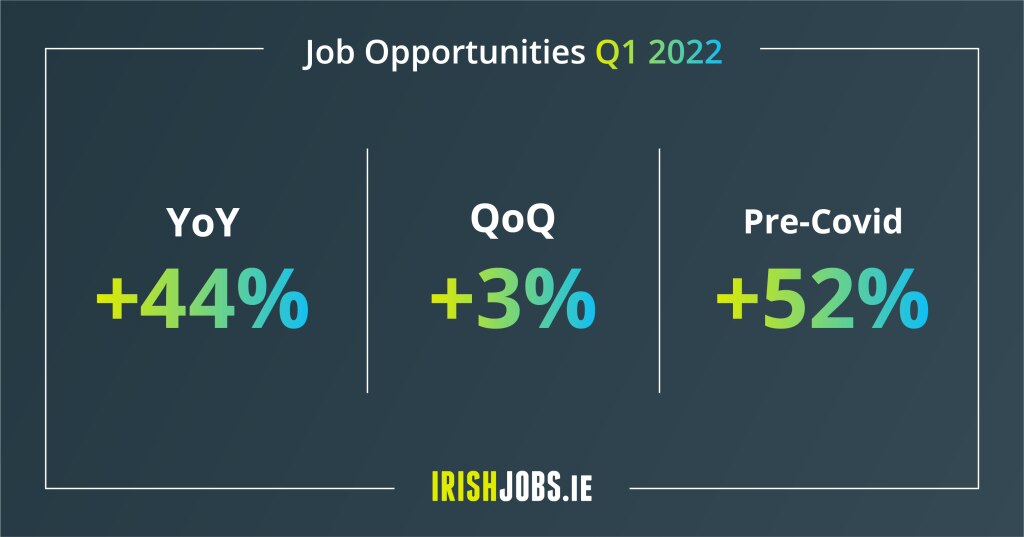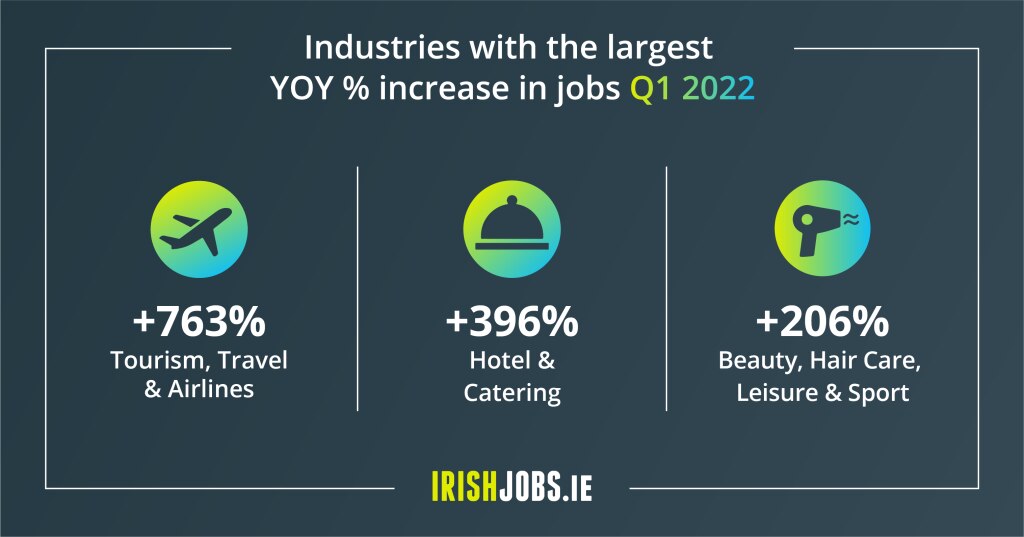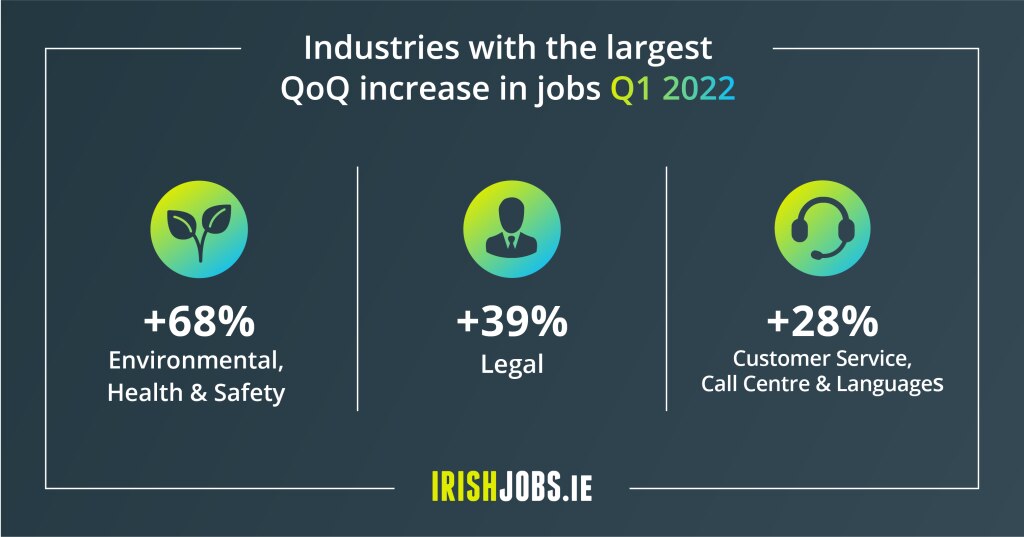The latest IrishJobs Jobs Index highlights a growing stabilisation in the number of job vacancies available across the country. While the Index reveals 44% year-on-year growth in the number of jobs available, this is a deceleration of growth compared to the year-on-year figure for last quarter (86%).

While year-on-year numbers have slowed, jobs have increased by 3% quarter-on-quarter, and the overall volume of jobs available remains high, reflecting the continued normalisation of the economy.
This is particularly clear when we see the growth level of over 700% for roles in the Tourism, Travel & Airlines sector. Meanwhile, there is a 130% year-on-year growth in the number of roles offering the option of remote work – another lasting impact of how the employment market has evolved over the course of the last two years.
Employers need to remain competitive
Commenting on today’s results, Orla Moran, General Manager, IrishJobs.ie, said: “The IrishJobs Jobs Index is an important quarterly barometer that consistently gauges what is happening in the jobs market. Over the past year, the Index has reflected the variable nature of the pandemic and its role as a key driver of hiring surges across the country towards the end of last year.
“With the lifting of all public health restrictions earlier this year, the first Jobs Index of 2022 suggests some stabilisation in the market with the number of job vacancies levelling out compared to the high year-on-year growth we saw last quarter. That said, we are still seeing growth in job vacancies with an increase of 44% compared to this time last year. This shows that the market for employment remains strong for job seekers around the country and employers need to remain competitive in order to retain and recruit talent.”
Industry analysis
Of the 30 sectors analysed in this quarter’s Index, 22 posted year-on-year increases in job vacancy creation in the first quarter of 2022, while 15 sectors posted quarterly increases in job vacancy creation.

Year-on-year, jobs have rebounded significantly in sectors worst hit by Covid-19, with Tourism, Travel & Airlines and Hotel & Catering displaying significant increases of 763% and 396% respectively.
Other sectors showing strong year-on-year growth in Q1 2022 include the Public Sector (+119%), Secretarial & Admin (+101%), HR & Recruitment (+98%), Security, Trades & General Services (+86%) and Construction, Architecture & Property (+71%).

On a quarterly basis, the largest increases in vacancies are evident in Environmental, Health and Safety (+68%), Legal (+39%) and Banking, Financial Services & Insurance (+25%).
JOB GROWTH OUTSIDE DUBLIN
Meanwhile, a growing number of job vacancies are becoming available outside of Dublin.
While almost every county in Ireland, apart from three, experienced double or triple-digit year-on-year growth, Wicklow (+134%), Kilkenny (+129%), Kildare (+114%) and Carlow (+116%) saw the largest rise in the number of job vacancies, with vacancies in the capital of Dublin rising by +38% (+3% quarter-on-quarter).
Flexibility key in an employee’s market
“Today’s results show that it is still very much an employee’s market,” Orla Moran continued.
“HR departments will continue to have to work hard to fill key talent gaps in their organisation. One bit of good news for beleaguered recruiters is that, according to research carried out by iReach, 30% of people in March 2022 say they were looking to move job within the next 12 months compared to 23% of people surveyed in December 2021.
This period is being framed as the “Great Re-Evaluation” as employees assess their career options and consider what is important to them. We are also starting to see the impact of inflation, which the ESRI believe will run at an average of 6.7% for the year, and is likely to encourage employees to move jobs to try and attain higher salaries in order to keep pace with soaring consumer prices.
“This puts even more pressure on HR teams and employers to ensure they have the right strategies and internal resources in place to support their recruitment and retention ambitions in 2022.
“It’s possible that inflation may, in time, replace Covid-19 and a better work-life balance as a key factor driving up the number of roles offering remote work, as people try to cut down on commuting and other costs associated with working from the office,” Moran added. “In fact, working from home vacancies continue to grow at a faster rate than overall vacancies.
“However, as the Great Re-Evaluation, impact of inflation and competition for the best talent continues, it’s clear that employers looking to attract and retain people in today’s market should continue to prioritise flexible working within their recruitment strategies in order to meet the evolving needs of existing employees and prospective candidates within their field.”
